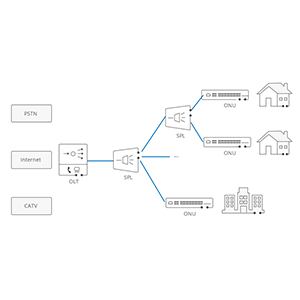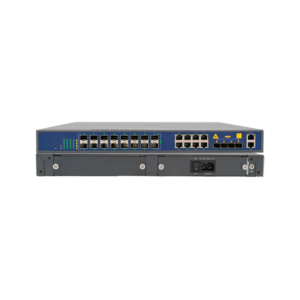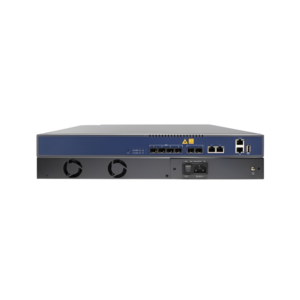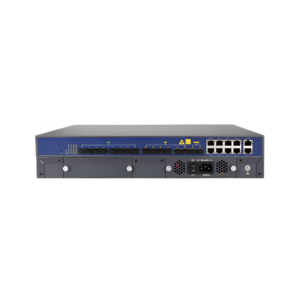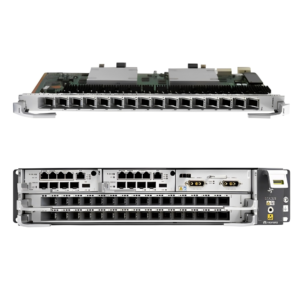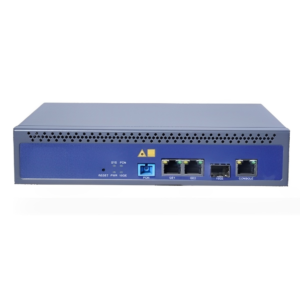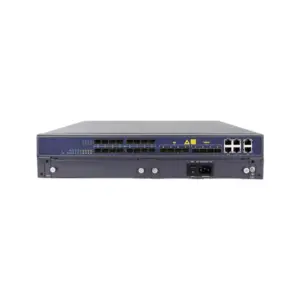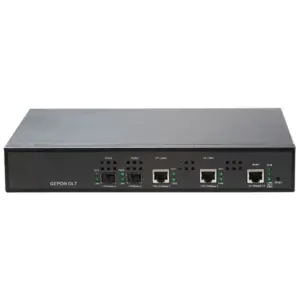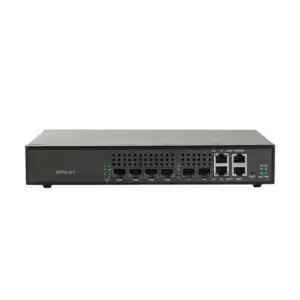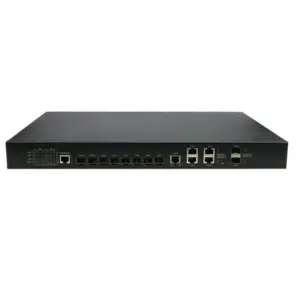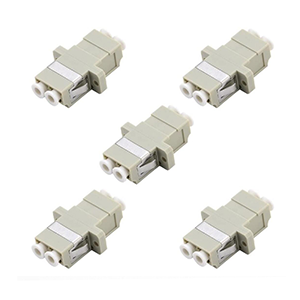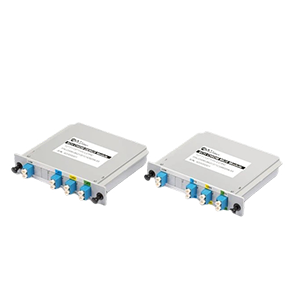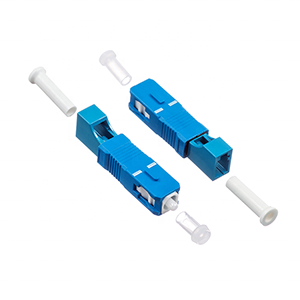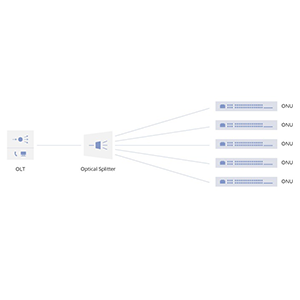Hello everyone! FTTH network is the leading technology in the current optical access field, in which OLT, as the core equipment, plays a vital role in realizing high-speed optical access services. Today I am very happy to discuss with you in depth the role of OLT in the FTTH network architecture, as well as its key technical characteristics in supporting broadband services and ensuring network reliability.
By fully understanding the advantages of OLT equipment, I believe you will be able to choose the most suitable solution for your FTTH network and provide users with an excellent optical access experience. If you want to learn more about how OLT and ONT work together, please refer to the article olt and ont: The best comprehensive guide for beginners
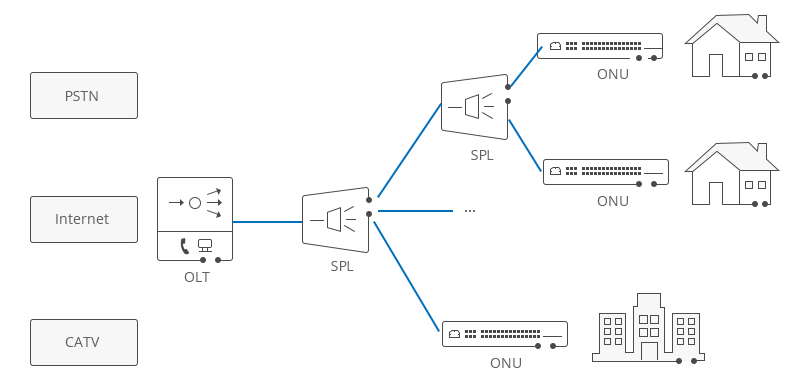
What is OLT
Let me introduce to you OLT (Optical Line Terminal) technology:
Basic functions and features of OLT:
- OLT is the central equipment in the FTTH (Fiber To The Home) optical fiber access network.
- The main functions include: receiving business traffic from the upper layer network and distributing it to each user-side ONU (Optical Network Unit) through ODN (Optical Distribution Network).
- Typical features include: high port density, high reliability, support for multiple PON (Passive Optical Network) standards, etc.
- It is the key equipment connecting the core network and access network in the FTTH network.
The core position of OLT in the FTTH network architecture:
- OLT is located at the central node of the FTTH network and is responsible for the management and control of the entire access network.
- OLT conducts two-way communication with each user-side ONU through ODN to realize interactive transmission of services.
- The performance and functions of OLT directly affect the overall service quality and carrying capacity of the FTTH network.
- OLT is a key hub device for building a complete FTTH network architecture.
The development history and application status of OLT technology:
- OLT technology continues to develop with the continuous evolution of PON standards, from the initial APON to today’s XGS-PON.
- Various PON standard OLT equipment has been widely used in FTTH network deployment worldwide.
- The functions of OLT equipment are constantly enriched, such as supporting virtualization, SDN and other new technologies to meet the needs of network evolution.
- OLT is an indispensable core device in FTTH networks, and its technological progress has a profound impact on the development of access networks.
From the above, it is not difficult to see that OLT is in a pivotal position in the FTTH network architecture and assumes key responsibilities such as receiving upper-layer services and managing ODN and ONU. The continuous innovation of OLT technology is crucial to improving the overall performance and user experience of FTTH networks.
Key technical characteristics of OLT
Let me introduce to you the key technical features of OLT (Optical Line Terminal):
Main hardware components and software functions of OLT:
- The hardware part includes: optical transceiver module, switching/routing module, management control module, etc.
- Software functions include: PON protocol implementation, business processing engine, system management platform, etc.
- The collaborative work of hardware and software enables OLT to realize core functions such as optical signal transmission and reception, business switching, and equipment management.
Technical advantages of OLT in optical transmission, service bearing, etc.:
- Supports multiple PON standards, such as GPON, XGS-PON, etc., providing flexible access capabilities.
- Equipped with high-density optical ports, it can serve a large number of user-side ONU devices at the same time.
- Using a high-performance switching/routing architecture, it can carry a wide range of business types and high bandwidth requirements.
- Integrated advanced PON management protocol to ensure the stability and reliability of network topology.
OLT key technical indicators and their impact on network performance:
- Optical transceiver performance: determines the optical transmission distance and bandwidth capabilities of the OLT.
- Switching capacity and port density: affect the user load scale and business throughput of OLT.
- Software functional completeness: reflects the OLT’s intelligence level in business processing, network management, etc.
- These indicators directly determine the overall performance and user experience of the FTTH network.
In summary, OLT is the core equipment of the FTTH network, and the advancement of its hardware and software directly determines the service capabilities of the entire access network. OLT’s advantages in optical transmission and service carrying make it a key foundation for building high-performance FTTH networks.
What is the role of OLT in FTTH network
Let me further discuss the important role of OLT (Optical Line Terminal) in FTTH (Fiber To The Home) fiber access network:
The key role of OLT in realizing fiber-to-the-home access network:
- As the central device of the FTTH network, OLT is responsible for the core task of connecting the business traffic of the upper layer network to the user-side ONU (Optical Network Unit).
- OLT carries out two-way communication with a large number of user-side ONUs through ODN (Optical Distribution Network), realizing the access network topology of “fiber to the home”.
- The characteristics of OLT such as high-density optical ports and flexible PON standard support ensure the comprehensive coverage of FTTH network and user access capabilities.
The importance of OLT in supporting broadband services and multi-service integration:
- OLT adopts a high-performance switching/routing architecture and can carry a variety of broadband services, such as high-definition video, cloud computing, etc.
- OLT can support multiple PON standards and realize the converged service carrying of different access technologies.
- OLT has complete business management functions, which helps operators achieve centralized control and flexible scheduling of multiple services.
- These features enable OLT to provide powerful business support capabilities for FTTH networks.
The significance of OLT in ensuring high reliability and flexibility in FTTH networks:
- OLT adopts redundant backup, modular design and other technologies to improve the reliability and availability of the entire FTTH network.
- OLT supports remote centralized management and configuration, simplifying network operation and maintenance and improving operational efficiency.
- OLT’s software and hardware upgrade capabilities ensure that the FTTH network can dynamically adapt to business evolution needs.
- These characteristics make OLT an important support and guarantee equipment in the FTTH network.
Therefore, OLT plays an indispensable pivotal role in the FTTH network. OLT provides key support for building high-performance, high-quality FTTH networks by realizing “fiber to the home” access capabilities, supporting a variety of broadband services, and ensuring high network reliability. The continuous innovation of OLT technology is crucial to the development of FTTH networks.
How should OLT be deployed and maintained
Let me give you a brief introduction to the deployment and maintenance of OLT (Optical Line Terminal):
Key links and precautions for OLT deployment:
- Site selection: Reasonably select the location of the OLT computer room based on the FTTH network topology.
- Capacity planning: Estimate the number of users and reasonably configure the number of optical ports of the OLT.
- Interface docking: Ensure the physical and logical connection between the OLT and upstream and downstream network equipment.
- Software and hardware configuration: Flexibly select OLT hardware modules and software functions according to actual needs.
- Debugging and acceptance: Comprehensively test the performance indicators of the OLT equipment to ensure that it works together with the FTTH network.
OLT network monitoring, fault diagnosis and optimization measures:
- Centralized monitoring: Deploy a network management system to monitor various performance parameters of the OLT in real time.
- Fault location: Use fault diagnosis tools to quickly locate the fault point of the OLT and its connected equipment.
- Software and hardware upgrade: Dynamically adjust OLT configuration according to business needs to improve network performance.
- Capacity expansion: Flexibly increase the number of optical ports of the OLT to meet user scale expansion needs.
Best practices for OLT operation and maintenance management in FTTH networks:
- Establish a sound inspection and maintenance mechanism to regularly check the status of OLT equipment.
- Develop a complete emergency plan to minimize OLT failure recovery time.
- Actively adopt automated operation and maintenance tools to improve the intelligence level of OLT network management.
- Continuously optimize the OLT configuration to ensure that it can flexibly adapt to the service evolution of the FTTH network.
In general, OLT deployment and maintenance require comprehensive consideration from multiple perspectives, both to ensure deployment quality and to improve operation and maintenance efficiency. Through effective monitoring, diagnosis and optimization methods, ensure that OLT can play its important role in the FTTH network.
Summary
OLT is undoubtedly the core equipment in FTTH network construction, and its key role in access network architecture, service carrying, and reliability guarantee is indispensable. With the continuous development of FTTH networks, OLT technology continues to be optimized and innovated to provide users with higher-speed and smarter optical access services. If you want to learn more about the differences between OLT and ONT, please refer to the article olt vs ont: Comparison Guide to the Best Differences in 2024
We provide professional OLT products and FTTH network planning services, and have an experienced technical team to provide you with considerate guidance at any time. If you have any needs during the construction and maintenance of FTTH network, please feel free to contact us for communication. Let us join hands to open a new era of intelligent FTTH network and create a better digital future!
What is OLT FAQ
An OLT (Optical Line Terminal) is the central equipment in a passive optical network (PON) that terminates the fiber optic network and provides the interface between the PON and the service provider’s network.
The OLT is responsible for managing the PON, allocating bandwidth, and providing the necessary interfaces to deliver services to the connected Optical Network Units (ONU).
OLT typically provide multiple PON ports, support for various PON standards (e.g., GPON, XGS-PON), integrated switching and routing functions, and management interfaces.
OLT and ONU use standardized protocols, such as GPON or XGS-PON, to establish and maintain the optical link and exchange data and control information.
OLT are typically managed by the service provider, who configures and provisions the OLT to deliver the desired services to the connected ONU.
OLT are designed to be energy-efficient and have appropriate cooling systems to operate in various environmental conditions, such as temperature and humidity.
Modern OLT often integrate Ethernet, voice, video, and other interfaces to simultaneously provide various value-added services to end-users.
OLT may have backup power supplies, redundant PON ports, and other resilience features to ensure high availability and minimize service disruptions.
OLT often provide modular designs and support for higher-speed PON standards (e.g., XGS-PON) to enable network upgrades and capacity expansion.
Factors like PON standards, port density, power consumption, and compatibility with the existing infrastructure are important when choosing an OLT.

